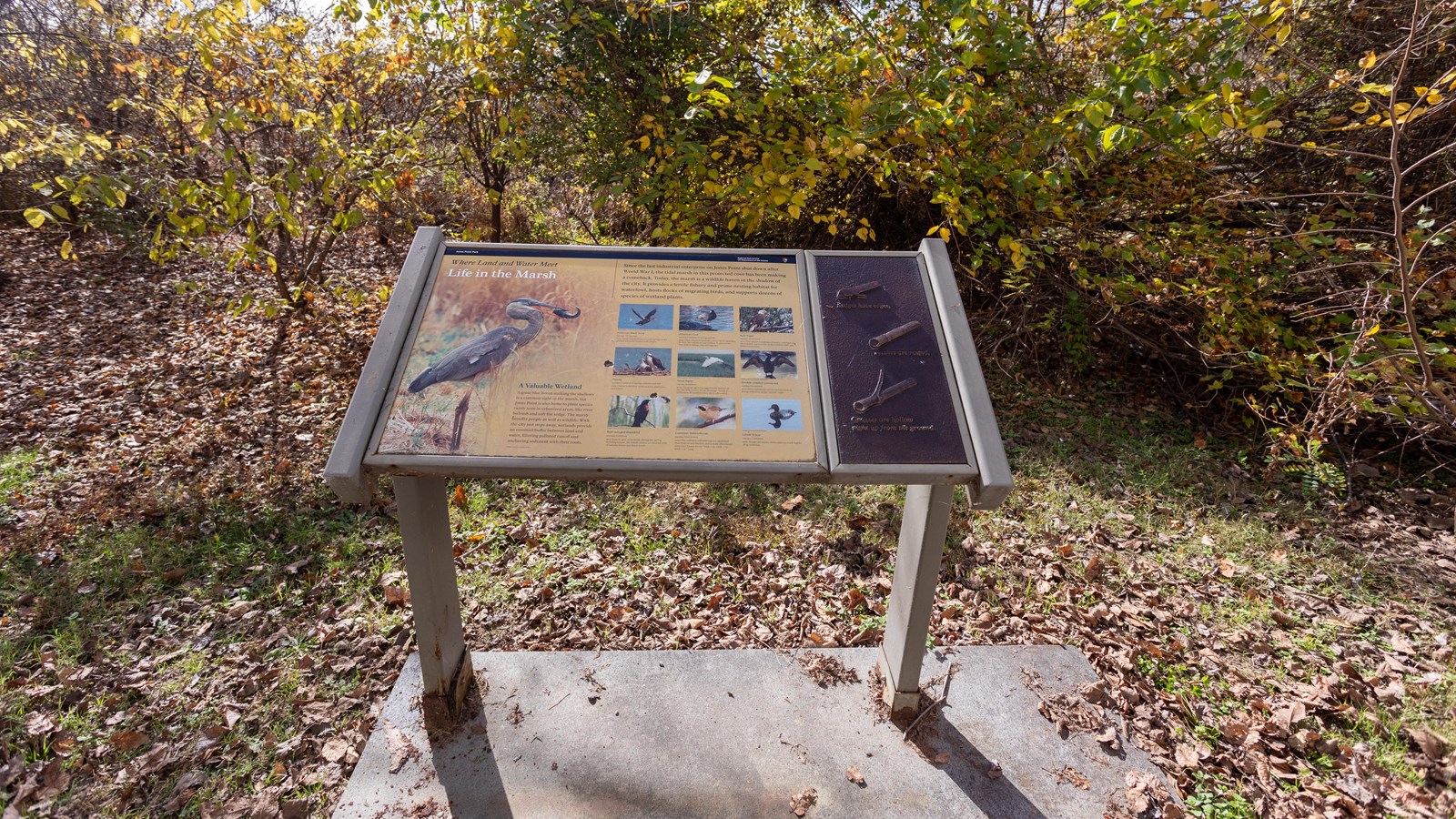Last updated: April 30, 2024
Place
Information Panel: Life In The Marsh

NPS / Claire Hassler
Historical/Interpretive Information/Exhibits
Where Land and Water Meet
Since the last industrial enterprise on Jones Point shut down after World War I, the tidal marsh in this protected cove has been making a comeback. Today, the marsh is a wildlife haven in the shadow of the city. It provides a fertile fishery and prime nesting habitat for waterfowl, hosts flocks of migrating birds, and supports dozens of species of wetland plants.
A Valuable Wetland
A great blue heron stalking the shallows is a common sight in the marsh, but Jones Point is also home to plant species rarely seen in urbanized areas, like river bulrush and soft fox sedge. The marsh benefits people as well as wildlife. With the city just steps away, wetlands provide an essential buffer between land and water, filtering polluted runoff and anchoring sediment with their roots.
American Black Duck
Occasional
These waterfowl nest in early spring on dry ground and avoid contact with people.
American Coot
Common in spring and fall
Often mistaken for ducks, coots can be identified by their feet, which are not webbed. Expert divers, they feed on foliage, fish and tadpoles.
Bald Eagle
Occasional
This species is making a dramatic comeback on the Potomac due to a ban on the pesticide DDT and federal protection.
Osprey
Common in spring, summer and fall
Osprey build their nests on trees, platforms, and buoys.
Great Egret
Common
The great egret was aggressively hunted in the late 18th century for its plumage - nearly to extinction. Its numbers have since rebounded.
Double-crested Cormorant
Occasional
These waterbirds can be seen perched on pilings with their wings "spread-eagle."
Red-winged Blackbird
Common
Easy to spot in wetlands during the spring breeding season, the female weaves an intricate nest of cattails, leaves and dried wood.
Common Yellowthroat
Uncommon
The common yellowthroat is a small bird that sticks to wet thickets and is more often heard than seen. Listen for its "wich-i-ty, wich-i-ty, wich-i-ty" song.
Lesser Scaup
Common
Scaups are expert divers and can reach depths of up to 60 feet.
Sedges have edges,
rushes are round,
grasses are hollow
right up from the ground.
